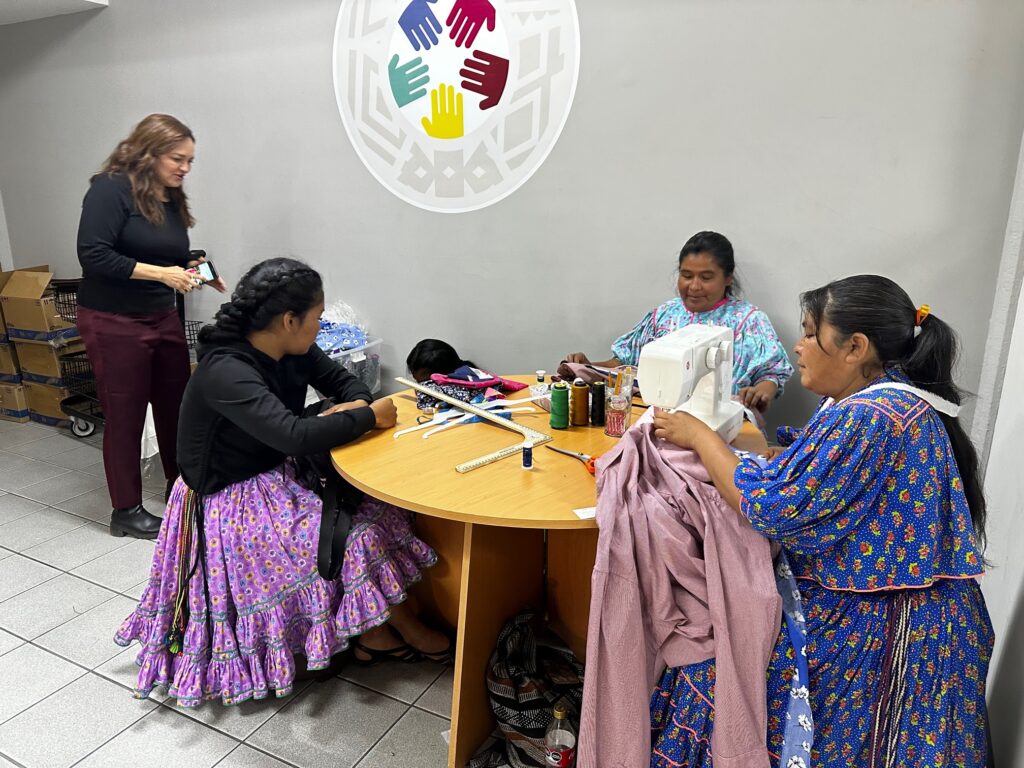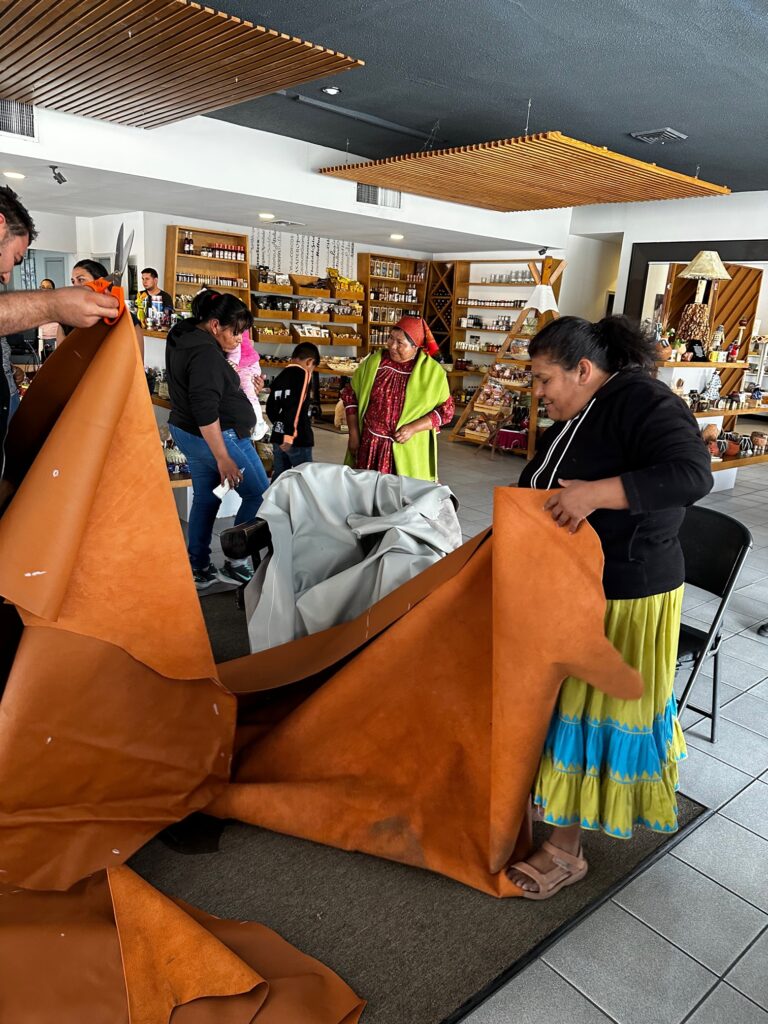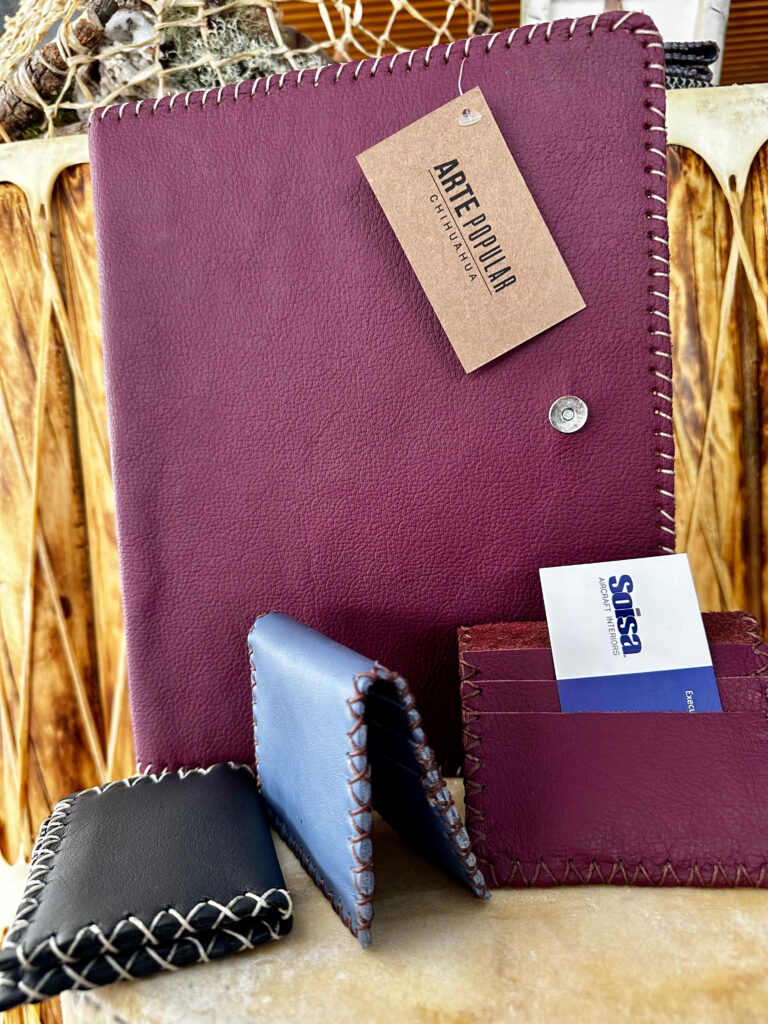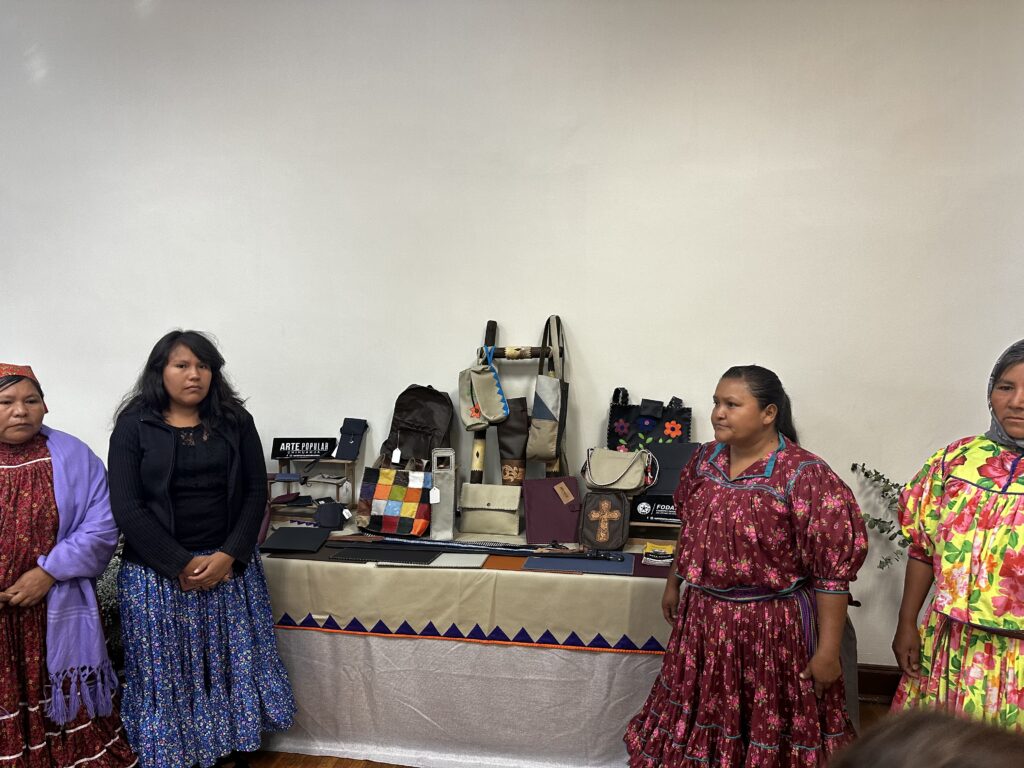As the aviation supply chain seeks to demonstrate its environmental, social and governance (ESG) credentials, one of the challenges is how to take strategic decisions that combine all three. Melding environmental and social initiatives together is a smart way to create a sustainable business for the long-term, with ESG partnerships that last.
A striking example of this combination comes from Soisa Aircraft Interiors, which specialises in upholstery and assembly of seats and other cabin interior elements. Based in the northern Mexican city of Chihuahua, Soisa is working with an artisans’ cooperative from the local Tarahumara people, providing seat covers, curtains and other material from aircraft. In turn, the artisans transform what would have been waste material into handmade handicrafts: wallets, bags, tablet cases, pouches, bottle carriers, and much more.
“We’re donating all of our scrap leather, fabric, synthetic leathers, even foams and velcros,” Soisa chief executive Jacobo Mesta tells Runway Girl Network. “With the government, we train them also — about thirty-five people right now.”
Those people, associated with Arte Popular Chihuahua and FODARCH (Fomento y Desarrollo Artesanal de Chihuahua), in turn support more than three hundred local families through sales at markets.
As part of the programme, aircraft lessor Avolon is a key source of not-quite-raw materials: as aircraft cycle from one operator to another, their fabric and other materials are sent off to Soisa in Chihuahua to be repurposed.
For many parts of the aviation interior, repurposing is much more practical than recycling, given that cabin materials are often treated in order to meet flammability and toxicity regulations, which means recycling can be complicated, sometimes prohibitively so.
Soisa is driving the initiative forwards as a partnership programme called From Waste to Wonder, with members including the company itself, Avolon, the local Chihuahua government and the two artisan organisations.
This kind of sustainable partnership, incorporating governments, the voluntary sector, and the private sector, is fundamental to sustainability — not just of the materials, but of the partnership, of income streams, of new skills, and of a unique fusion of traditional local handicrafts with advanced materials.
While the scale of the artisanal operation is not yet up to bringing the handmade goods back onto the aircraft as, say, amenity kits or cushion covers, there could well be an appetite, even at a relatively small scale.
Much as with the environmental benefits of reducing single-use plastic and other onboard waste, social enterprises and responsible production partnerships are a smart way for airlines and their soft product supply chains in particular to move the sustainability needle when it comes to onboard amenities.
The partnership between Delta and Someone Somewhere, for example, was expanded from the Delta One business class offering into the airline’s Premium Select premium economy class late last year. Even if an artisanal cooperative would find it difficult to produce at the scale that an airline like Delta would need, airlines with smaller or more boutique operations could well benefit from sustainable, ESG-focussed partnerships.
Could an amenity kit provider source, for example, from a number of smaller artisanal producers, showcasing an airline’s route network via a series of limited-edition amenity kits, or even small giveaways along the evolutionary conceptual line of the Lalique candle gifted to first class passengers on Singapore Airlines? How could that fit in even more neatly with a take-what-you-need, on-demand model for amenities onboard the aircraft?
Fundamentally, as Mesta concluded when introducing the From Waste to Wonder programme, “we are not just focused on the E, but also the S and the G.”
Related Articles:
- Rethinking amenity kits: the take-what-you-need model
- Nature and sustainability inspire ReWILDing collection from Muirhead
- Boltaron achieves true recycling of aerospace grade thermoplastics
- Latitude Aero rapidly expands to support nose to tail refurbishment
- Recycled and bio-plastics: a solution to the PaxEx plastics footprint?
- Press Release: Soisa Aircraft Interiors announces Avolon shipset order
- Sustainable amenity kits are a thing of beauty in and out of the cabin
All images credited to Soisa















